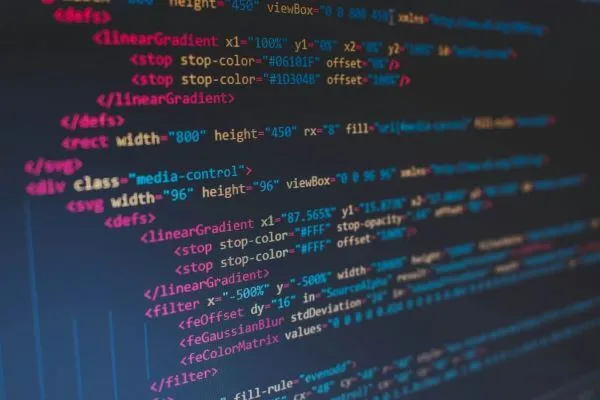
Best Practices for Writing Clean and Maintainable Code
In the fast-paced world of software development, writing code that works is only half the battle. The true mark of a skilled developer is the ability to write clean, maintainable, and scalable code that stands the test of time. Whether you're working on a small personal project or a large enterprise application, adhering to best practices ensures that your codebase remains easy to understand, debug, and extend. This is especially important in collaborative environments, where multiple developers need to work on the same codebase without stepping on each other's toes.
In this article, we'll explore essential tips and strategies for writing clean and maintainable code in popular programming languages like JavaScript, Python, and PHP. From following consistent naming conventions and keeping functions small to leveraging version control and writing comprehensive tests, these practices will help you create code that is not only efficient but also a pleasure to work with. Whether you're a beginner or an experienced developer, these guidelines will serve as a valuable reference to elevate your coding skills and improve the quality of your projects.
1. Follow Consistent Naming Conventions
- Use meaningful and descriptive names for variables, functions, and classes.
- Stick to a consistent naming style (e.g.,
camelCase,snake_case, orPascalCase). - Avoid single-letter variables or ambiguous names.
// Bad
let x = 10;
// Good
let userAge = 10;2. Keep Functions and Methods Small
- Aim for single responsibility: Each function should do one thing and do it well.
- Break down complex tasks into smaller, reusable functions.
- Ideally, a function should fit within a screen height (20-30 lines).
# Bad
def process_data(data):
# Validate data
if not data:
return False
# Process data
result = []
for item in data:
result.append(item * 2)
# Save data
save_to_database(result)
return True
# Good
def validate_data(data):
return bool(data)
def transform_data(data):
return [item * 2 for item in data]
def process_data(data):
if not validate_data(data):
return False
result = transform_data(data)
save_to_database(result)
return True3. Write Readable and Self-Documenting Code
- Use comments sparingly to explain "why" rather than "what".
- Write code that is so clear it doesn't need comments.
- Avoid redundant or misleading comments.
// Bad
$i = 0; // Set i to 0
// Good
$counter = 0; // Initialize counter for the loop4. Use Version Control (Git) Effectively
- Commit small, logical changes with descriptive messages.
- Use branches for new features or bug fixes.
- Regularly pull and merge changes to avoid conflicts.
feat: Add user authentication middleware
fix: Resolve login form validation bug5. Avoid Hardcoding Values
- Use constants, configuration files, or environment variables for values that may change.
- This makes your code more flexible and easier to update.
// Bad
const apiUrl = "https://api.example.com/v1";
// Good
const API_URL = process.env.API_URL || "https://api.example.com/v1";6. Write Tests
- Use unit tests, integration tests, and end-to-end tests to ensure your code works as expected.
- Test-driven development (TDD) can help you write cleaner and more reliable code.
function add(a, b) {
return a + b;
}
test('adds 1 + 2 to equal 3', () => {
expect(add(1, 2)).toBe(3);
});7. Refactor Regularly
- Continuously improve your code by refactoring to remove duplication, improve readability, and optimize performance.
- Use tools like linters and formatters (e.g., ESLint, Prettier, Black) to enforce coding standards.
# Before Refactoring
def calculate_area(shape, width, height=None):
if shape == "rectangle":
return width * height
elif shape == "square":
return width * width
# After Refactoring
def calculate_rectangle_area(width, height):
return width * height
def calculate_square_area(side):
return side * side8. Handle Errors Gracefully
- Use try-catch blocks or error-handling middleware to manage exceptions.
- Provide meaningful error messages for debugging.
try:
result = 10 / 0
except ZeroDivisionError as e:
print(f"Error: {e}. Cannot divide by zero.")9. Optimize for Readability Over Cleverness
- Avoid overly complex one-liners or "clever" code that is hard to understand.
- Prioritize readability and maintainability.
// Bad
const isEven = num => !(num & 1);
// Good
const isEven = num => num % 2 === 0;10. Document Your Code
- Write clear documentation for APIs, libraries, and complex logic.
- Use tools like JSDoc, Sphinx, or PHPDoc to generate documentation automatically.
/**
* Calculates the sum of two numbers.
* @param {number} a - The first number.
* @param {number} b - The second number.
* @returns {number} The sum of a and b.
*/
function add(a, b) {
return a + b;
}Bonus Tips
- Use Design Patterns: Familiarize yourself with common design patterns (e.g., Singleton, Factory, Observer) to solve recurring problems.
- Leverage Code Reviews: Collaborate with peers to catch issues early and share knowledge.
- Stay Updated: Follow best practices and trends in your programming language or framework.
By following these best practices, you'll create code that is not only functional but also clean, maintainable, and a joy to work with for you and your team. Happy coding!



